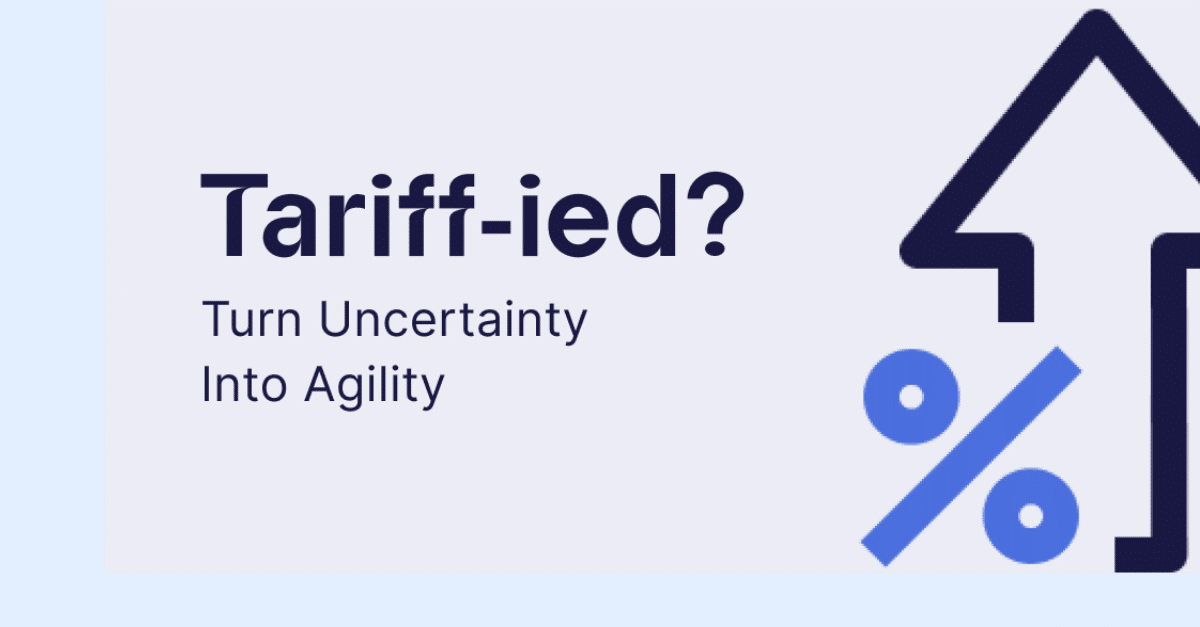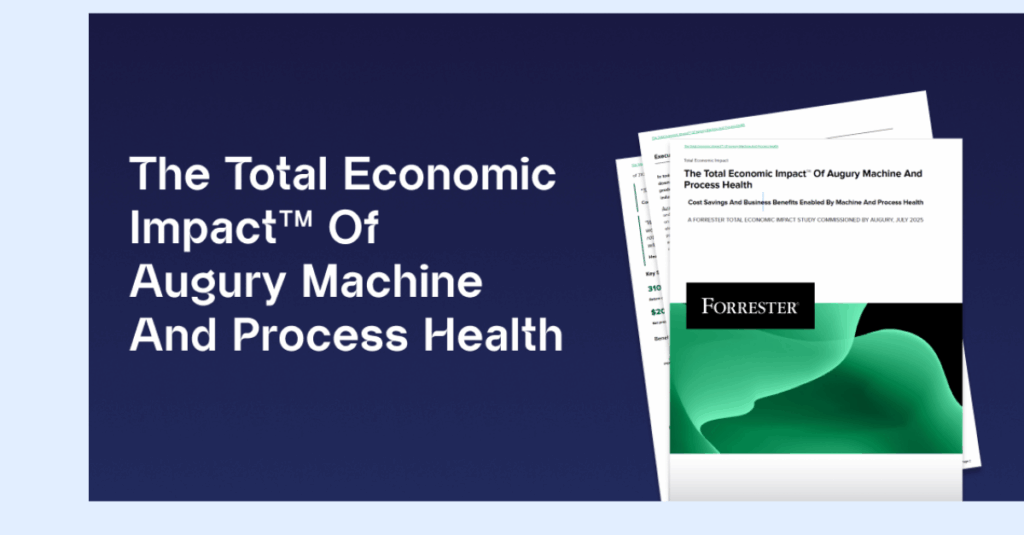
With all the on-again/off-again tariff talk in the news, it’s only natural to have a serious case of whiplash. But before you call the chiropractor, take heart: three manufacturing veterans are here to discuss what you can control, and how to adjust accordingly.
Ready for a paradox? The only thing that’s certain in business is uncertainty. So in that sense, tariff turmoil is just another day at work. And in the spirit of bringing calm to the chaos, Augury’s VP of Strategy, Artem Kroupenev, hosted an insight-packed session with a few of our favorite experts who have been there, done that, and lived to tell their tales:
- Terry LeDoux (Digital Manufacturing Expert, Former VP of Nestle Purina North America)
- Alvaro Cuba (Strategic Supply Chain Consultant, Former Mondelez Supply Chain Executive)
- Fred Wasden (Oil & Gas Consultant, Retired from Shell)
This Is Not A Pandemic Crisis Redux
While manufacturers are no strangers to disruption (COVID, anyone?), each of our panelists acknowledge that today’s tariff tango is somewhat unique:
- Unlike COVID, countries can’t simply inject money this time — with inflation already high, stimulus would only make it worse
- Energy market volatility adds another layer of complexity. Fred warns: “In the energy space, the primary driver is the product’s price, which is forecast to go down dramatically. We’re currently sitting at an oil price of, say, 60 to 65. I’ve seen some of the banks predict 40 within the next year.”
- Uncertainty levels are unprecedented — even veteran leaders are struggling to plan ahead
- Global supply chains aren’t just disrupted — they’re getting a complete geopolitical makeover
Three Winning Moves That Won’t Break the Bank
So, how can you survive and thrive in Tariff-land? Our manufacturing veterans unveiled three power plays that won’t require begging your CFO for a massive budget increase:
1. Digital Transformation, Full Speed Ahead (Yes, Really – Now is the Perfect Time!)
Forget pumping the brakes—it’s time to put the pedal to the metal on your digital roadmap. As Terry says: “It honestly accelerates a lot of the digital transformation. These are rapid implementations with paybacks in 90 to 180 days.”
Predictive technologies are transforming traditional cost-cutting approaches. According to Fred, “In the past, oftentimes when we did the ‘cut and cope’, we just hoped we weren’t overlooking something. What’s changed now is a growing acceptance of the value of predictive maintenance… that will enable this ‘cut and cope’ to not make a mess of the business.”
Translation: While your competitors are frozen with indecision, you could be deploying quick-win tech that pays for itself before the next tariff announcement hits the news cycle. The panel’s advice included:
- Connected worker tech that supercharges your frontline employees’ capabilities
- Machine health monitoring that predicts asset failures and prescribes timely fixes
- Process health analytics that squeezes every drop of efficiency from your production line
- AI coaching tools that make even your newest hires perform like veterans
2. Draw In New Talent Faster, and Keep Them Longer
Forget the outdated image of manufacturing as dirty, monotonous work. Our experts emphasize that modern manufacturing environments are highly sophisticated, technology-driven workplaces—far from the dated perception many still hold.
Terry notes, “There’s a common misconception around manufacturing that it’s a dirty environment to work in. It’s monotonous… which actually isn’t true today in modern manufacturing.”
Digital tools are your secret weapon for talent attraction and development:
- Slash onboarding time from nine months to five (who has nine months to wait anyway?)
- Create “YouTube for manufacturing” so workers can learn on demand (easier than paging through manuals)
- Deploy digital twins for training that doesn’t put your actual equipment at risk
- Implement AI coaches that turn rookies into rockstars with real-time guidance
3. X-Ray Vision for Your Supply Chain (No Superpowers Required)
When tariffs are changing faster than your social media feed, you need superhero-level visibility. Luckily, AI has your back.
As Alvaro explains, “Massive data requires visibility. Right now you have software and AI that helps you keep track, even gives you forecasts of pricing… and monitors what’s happening in every country with every supplier at the same time.”
Fred builds on Alvaro’s insight: “One of the producers I was talking to had turned some AI loose on predicting which spare parts they should be stocking up on now based on the rates of failure, the countries of origin, and some indication of the robustness of the supply chain. That’s a new level of sophistication.”
The Silver Lining Playbook
By now, you know our battle-tested experts aren’t reaching for the panic button—and they don’t want you to, either. They are downright bullish about manufacturing’s future.” All these crises make us stronger, more agile,” Alvaro says. “With the new technology, it’s so simple… You don’t need capital because it’s OpEx. It’s just pay as you go. It’s implemented in weeks, you have results in three months, and you pay with the savings.”
The bottom line? Manufacturers who respond to tariff uncertainty with strategic digital investments will not only survive these challenging times — they’ll also build resilience that will serve them well long after the current headlines fade.
Didn’t see the event? Now you can watch “Tariff-ied? Turn Uncertainty Into Agility” on-demand. You might also like this episode of Manufacturing Meet Up: Surviving Tariff Chaos: Manufacturing Strategies That Actually Work.



